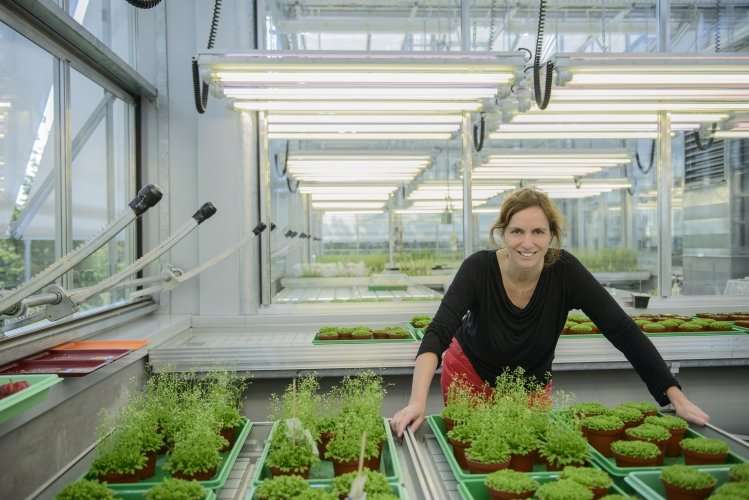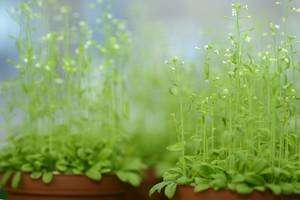Researcher investigates the role of small RNAs in communication between cells

When a multicellular organism develops, each cell needs to know its place in relation to all other cells. This means cells need to communicate amongst themselves to create the patterns from which different tissue and cell types arise. In the case of animals, we know about the signals and mechanisms which drive these patterning processes.
With plants it's different, because multicellular plants have evolved independently of multicellular animals. Professor Marja Timmermans of Tübingen's Center for Plant Molecular Biology has worked with colleagues at Cold Spring Harbor Laboratories in New York to discover that cell communication during patterning in plants is carried out via a unique and intricate mechanism. Plants use "small RNAs" as mobile signals. Small RNAs were previously known for their role in defense mechanisms against herbivores or disease pathogens, but as the new study shows also underlie that cells in the leaf take on the correct identity in space and time. The results of this research have been published in the latest issue of Developmental Cell.
"Research on pattern formation in organisms has a rich history in Tübingen," Marja Timmermans points out. In the early seventies, Professors Hans Meinhardt and Alfred Gierer, then at the Max Planck Institute for Virus Research, worked out basic principles for how pattern can arise in a population of cells, and Professor Christiane Nüsslein-Volhard, Director at the Max Planck Institute for Developmental Biology, was rewarded the Nobel prize for her work on the genetic control of patterning in the egg of the fruit fly Drosophila in 1995.
Communication and patterning in multicellular animals frequently occur via mobile signals, which use concentration gradients. Depending on the concentration, and often on a threshold value, cells specialize in various tasks. This mechanism is now shown to happen in plants as well, although they use other signal chemicals. Unlike animal cells, plant cells may be connected via plasma bridges, allowing regulating factors to move through the whole system and contributing to patterning.

Marja Timmermans and her colleagues followed up clues indicating that small RNAs could be involved in plant cell patterning. Small RNAs are short molecule chains which perfectly match certain regulatory sections of genetic information in DNA or RNA. They are able to attach themselves there, thereby preventing those particular genes from being read. Small RNAs enable fine-tuned regulation of protein production and therefore also developmental processes in the cells.
High-performance mechanism for passing on positioning information
Using a model plant for genetics, Arabidopsis or rockcress, the researchers investigated what role the small RNAs played in the positioning and development of the new leaf. By introducing artificial small RNAs, they changed the concentration of these coordinating elements and observed how the cells in the growing leaf responded. "The surprising thing was that the small RNAs were able to produce stable patterns," says Timmermans. As with the mobile signal chemicals in animals, the small RNAs form a concentration gradient. "Unlike the conventional development signals, small RNAs operate in a highly specific way, and they can intervene directly in gene activity."
Small RNAs could therefore regulate the activity of certain genes depending on their location – without feedback from other components in the process. "Mobile small RNAs provide a high-performance mechanism for passing on positioning information. They can develop precise development patterns," Timmermans sums up.
More information: Boundary Formation through a Direct Threshold-Based Readout of Mobile Small RNA Gradients. Developmental Cell. doi.org/10.1016/j.devcel.2017.10.003
Journal information: Developmental Cell
Provided by University of Tübingen



















